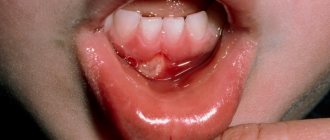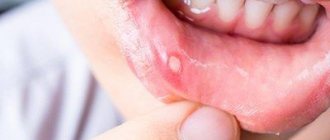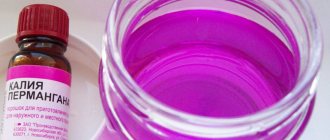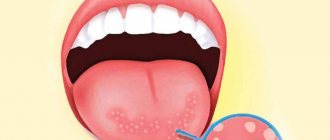FREE CONSULTATIONS!
We are pleased to announce the start of free admission at the Konstanta Clinic for patients under 18 years of age by maxillofacial surgeon, pediatric surgeon L.A. Eremeyshvili. for questions:
- Congenital facial pathologies: cleft lip and palate;
- Benign neoplasms of the face and oral cavity;
- Diseases of the temporomandibular joints;
- Pathology of the frenulum of the oral cavity: lips and tongue.
Correction (plasty) of tongue frenulum is provided free of charge for children under 1 year of age.
*Valid for residents of Yaroslavl and the Yaroslavl region.
You can make an appointment by phone or through the website (4852) 37-00-85 Daily from 8:00 to 20:00
Sign up for a consultation
Congenital cleft palate or cleft palate is a fairly common malformation of the facial region. This pathology is ranked 4th among all developmental defects, and it is diagnosed with a frequency of 1:700 births. Often, a cleft palate is not an independent deviation, but part of a hereditary syndrome.
Red spots in the mouth, causes of redness of the mucous membrane
In the mouth, red spots may appear on the roof of the mouth, gums, lips and other mucous parts. Most often, this is a signal for a person to visit a dental clinic, since the dentist treats not only teeth, but also other lesions of the oral cavity. Such cases include red spots on the patient’s oral mucosa.
How do such ailments appear?
If redness appears in the mouth of an adult or he discovers strange red spots in the oral cavity, it is best to immediately seek medical help. The appearance of a red or pink rash on the oral mucosa (ORM) can be caused by various reasons:
- The mouth reacted to damage to the brain or blood vessels.
- The mucous membrane of the oral cavity became stained due to acute poisoning.
- The patient's mouth has red spots due to a viral infection.
- On the mucous membranes of the organ, there was a sharp activation of the patient’s own microflora (fungi, bacteria, etc.).
- The cause of the development of spots can be allergies.
Doctors point to another possible reason for the change in color of the surface layers of the oral cavity. Such cases have been recorded in adult patients when the mucous membrane is exposed to too low or, conversely, high temperatures. The red spot in this case appears instantly due to vascular paresis (high temperature) or develops gradually due to cyanosis (low temperature).
Infectious lesions of the organ
The causes of the described illness most often lie in an infection that has entered the patient’s mouth. Typically, a rash during chickenpox occurs on the cheeks, palate, tongue, and other mucous membranes, and also spreads throughout the patient’s body.
When a person has scarlet fever, many small red spots are visible on the oral mucosa. But they are also present on the cheeks, corners of the lips, and skin of the body. At the same time, the spots tend to enlarge by merging. Then a red rash covers the patient's entire body. First, this is the face (except for the triangle between the nose and lips), then the arms, and subsequently the upper torso.
Stomatitis caused by herpes, in addition to redness in the oral cavity, is characterized by the occurrence of hyperthermia and signs of intoxication (headache). The person feels general weakness, his whole body aches, and his mouth hurts greatly when eating.
If a patient has the flu or another cold, he often has a fever, there is discharge from the nose, and the mouth often reacts to the disease by developing a rash or redness of the mucous membrane.
Source: https://zubi.pro/rot/vo-rtu-krasnyie-pyatna.html
If the child has a pathology
A diagnosis of “cleft palate” in a child is not a death sentence, and parents need to remember that the pathology responds well to treatment if it is started early. During the treatment period, the main role is given not only to surgical intervention, but also to the patience of parents, their responsibility and willingness to deal with the health of their own child. You must be prepared to carefully implement all recommendations.
Once a diagnosis of cleft palate is made, the child is taken to a surgeon who can create a treatment plan.
In our Clinic, such defects are dealt with by Sergey Nikolaevich Bessonov and Levan Avtandilovich Eremeyshvili, who are maxillofacial surgeons. Appointment with doctors S.N. Bessonov and L.A. Eremeyshvili takes place over the phone.
Thanks to the help of a charitable foundation, surgery to correct a cleft palate can be completely free. All you need to do is prepare the documents from the list and wait for an individual call to a specialist.
Violations associated with vice
A cleft of the soft and hard palate leads to the appearance of a communication between the oral and nasal cavities. A cleft of the soft palate leads to improper attachment of muscle structures and deformities of the pharynx in the middle section. The soft palate is also significantly shortened.
A cleft palate leads to the fact that the child cannot normally perform sucking and swallowing movements, his breathing processes are disrupted, and his bite is formed incorrectly. With age, the deformation intensifies, and problems with speech appear.
Cleft palate
Red spots in the mouth on the roof of the mouth
The peculiarity of the mucous membranes is their sensitivity to any changes in the body. Their sensitivity can be expressed by a rash, which is used to determine the diagnosis. Spots appear on the mucous membranes of adults and children. What do red spots in the mouth of a child and an adult indicate?
Causes
The rash is small spots that are usually red in color. It is a manifestation of a variety of diseases. In children, it may be a sign of an allergy or the beginning of a viral, fungal, or bacterial infection. The diagnosis is made by an experienced doctor based on the examination, complaints and medical history of the patient.
A rash in the mouth usually occurs for a number of reasons, which are divided into three groups:
- Allergic.
- Infectious.
- Diseases of the blood and blood vessels.
The first elements of the rash are visible on the back of the throat. As it progresses, it will spread further and capture new areas of the oral mucosa, tonsils, tongue, slowly reaching the skin.
What infectious diseases are accompanied by a rash in the mouth?
Most often, red spots in the mouth appear due to infection. But the rash will not be the only symptom. The body temperature will rise, the throat will begin to hurt, the person will feel general weakness and pain when swallowing. Associated symptoms determine the type of infection.
These may be influenza, herpes simplex virus, chickenpox, rubella, measles, mononucleosis, erythema infectiosum, roseola, scarlet fever, typhus, syphilis, staphylococcal infection, meningitis. The list of diseases is quite wide, and all of them are very dangerous.
A child's body copes with a viral infection more easily. In case of chickenpox, scarlet fever or rubella, a long quarantine is required, but the child’s condition does not cause concern. After recovery, persistent lifelong immunity is acquired. But measles, rubella and chickenpox are dangerous for adults, they are severe and cause various complications. Treatment is often carried out in a hospital.
In young children, the following diseases, manifested by a rash, are severe:
- Primary infection with the herpes virus.
- Herpetic sore throat.
- Stomatitis.
Important: These diseases develop rapidly and acutely.
Stomatitis
The spots may be pale pink or bright red. Elements are located separately from each other or merged. Types of stomatitis: candidal, viral, herpetic, bacterial, aphthous, traumatic. An accurate diagnosis is made by the doctor after examination and other manipulations. Herpetic and aphthous stomatitis are especially common.
Herpetic stomatitis
Symptoms: malaise, headaches, weakness, fever. The mucous membrane becomes red and swollen. Small bubbles are visible. They are located on the palate, cheeks, tongue, lips. After 2-3 days, the bubbles will begin to burst and form bright red erosions.
This form of stomatitis is caused by the herpes virus, which will remain in the body forever, once you experience this infection. The disease can recur due to the following factors:
- Immunity decreases.
- Chronic inflammatory diseases are getting worse.
- For allergies, stress, vitamin deficiency.
- After taking corticosteroids.
- After trauma to the mucous membrane.
Reasons for decreased local immunity:
- Soft plaque and tartar accumulate on the teeth.
- Infection in advanced caries.
- Gingivitis, periodontitis.
- Chronic tonsil infection.
- Mouth breathing.
Treatment of herpetic stomatitis is as follows:
- Famciclovir. Take one day, 1500 mg at a time or 750 mg twice with an interval of 12 hours. One of the most powerful drugs.
- Valaciclovir. Taken twice a day, 2000 mg with an interval of 12 hours. This drug is weaker, but stronger than Acyclovir, the most famous remedy for herpes.
- Rinse your mouth with Miramistin four times a day for a minute. Other topical medications used to rinse the mouth (Chlorhexidine or infusions) are ineffective against the herpes virus.
- Viferon-gel contains interferons, which have antiviral and immunostimulating effects. The gel is applied to the affected areas with a gauze pad three times a day for one week.
- Amiksin is a drug that increases immunity and prevents new outbreaks of herpes. Take a tablet once a day for the first two days. Then take it every other day. Take 20 tablets. Imudon is used to increase immunity in the oral cavity. Dissolve 6 tablets per day for 20 days in a course twice a year.
Herpangina
This is an acute infectious-allergic disease. Young children are more often susceptible to it. The source is the virus carrier. Herpetic sore throat is transmitted by airborne droplets.
Important: A recovered patient may remain a carrier of the virus and a source of infection.
Symptoms:
- The temperature rises sharply to high levels and persists for several days.
- Cramping pain in the abdomen.
- The mucous membrane of the palatine arches, uvula, palate and posterior pharyngeal wall turns red.
- Papules appear in the oral cavity, which later become blisters with cloudy liquid.
- Pain when swallowing, itching, profuse salivation.
- After a few days, the bubbles will open, leaving erosion.
- The pathology disappears after 10 days.
- Possible enlarged lymph nodes.
The following methods are used for treatment:
- Bed rest until recovery.
- The patient should eat liquid and semi-liquid food enriched with vitamins. Drinking plenty of fluids will intensively remove toxins.
- Antibiotics should not be used to treat this disease - this is inappropriate.
- Acyclovir is not very effective, since herpangina is not a herpes virus, but an enterovirus.
- The patient is prescribed mouth rinse, analgesics, and non-steroidal anti-inflammatory drugs.
- Patients with signs of meningitis, myocarditis, in serious condition, and children under one year of age are subject to hospitalization.
Streptococcal tonsillitis (tonsillitis)
This is an acute infectious pathology that affects the palatine tonsils. The causative agent is streptococcus. Capable of releasing many different toxins, antigens that damage the heart muscle, kidneys, and joints.
Interesting: Streptococcal tonsillitis can cause the development of late complications. 10 days after the start, the patient sometimes develops problems with the heart and kidneys.
Symptoms:
- Body temperature rises.
- Aches, headache, weakness.
- Pain in the throat, neck, temples, ears.
- Lymph nodes enlarge.
- The tonsils are loose and covered with plaque.
- In children, the disease is more severe.
Penicillin antibiotics are used as treatment: Amoxiclav, Augmentin. If you are allergic to penicillins, macrolides (Azithromycin, Sumamed) are suitable. Local therapy is also prescribed:
- Gargling with antiseptic agents.
- Antibacterial and antiseptic throat sprays.
- Lubricating with Lugol's solution.
How to identify a rash caused by an allergy?
An allergic rash in the mouth on the roof of the mouth or the back of the throat usually does not cause discomfort. It can be caused by food, toothpaste, mouthwash or medications. The spots will go away as soon as the allergen wears off.
Symptoms:
- The spots are located symmetrically.
- Between the elements there are light areas on the affected mucosa.
- Elements often merge into a single large spot.
- No itching or burning.
- The rash spreads to the skin.
Despite the seemingly harmless nature of this manifestation, it is still necessary to consult a doctor.
Rare diseases
Sometimes spots that appear on the oral mucosa indicate very specific diseases:
- Pyogenic granuloma. Appears in a place that is often injured. Children and adolescents are more often susceptible. It is a single red papule less than 1 cm in size. The base is often surrounded by a scaly rim. Sometimes there are a lot of rashes. Such a papule is cut off at the root, then electrocoagulation of the base is performed. Pulsed laser therapy may be used. If the tumors are very small, they are cauterized with silver nitrate.
- Petechiae on the palate. Large red elements are scattered along the soft and hard palate. Mononucleosis often accompanies the disease. Petechiae are flat, dotted spots. Usually occur due to injury or are a manifestation of thrombocytopenia, infective endocarditis, smallpox, typhoid fever and other diseases. Important: It also occurs due to poor nutrition of the child, which provokes scurvy. It is characterized by pinpoint hemorrhages of the skin and oral mucosa. Children often develop fever. Taking vitamins C, P, K, liver extracts, and administering globulins helps.
- Kaposi's sarcoma. Convex or flat purple malignant neoplasms appear on the mucosa. Very often appear in HIV-infected people. Treatment usually involves boosting the patient's immunity. Intensive chemotherapy is also carried out. Local treatment: cryotherapy, injections of chemotherapy drugs, interferon into the tumor, prospidium chloride ointments and other methods.
One of the main recommendations when detecting red spots in the mouth: you cannot diagnose yourself and prescribe treatment. You can waste time and harm yourself. It is necessary to consult a doctor and immediately begin the therapy prescribed by him.
Oral hygiene - dentist advice
- 0
- Skype
- +1
- ontakte
Source: https://prozuby.com/gigiena-polosti-rta/krasnye-pyatna-vo-rtu-na-njobe/











